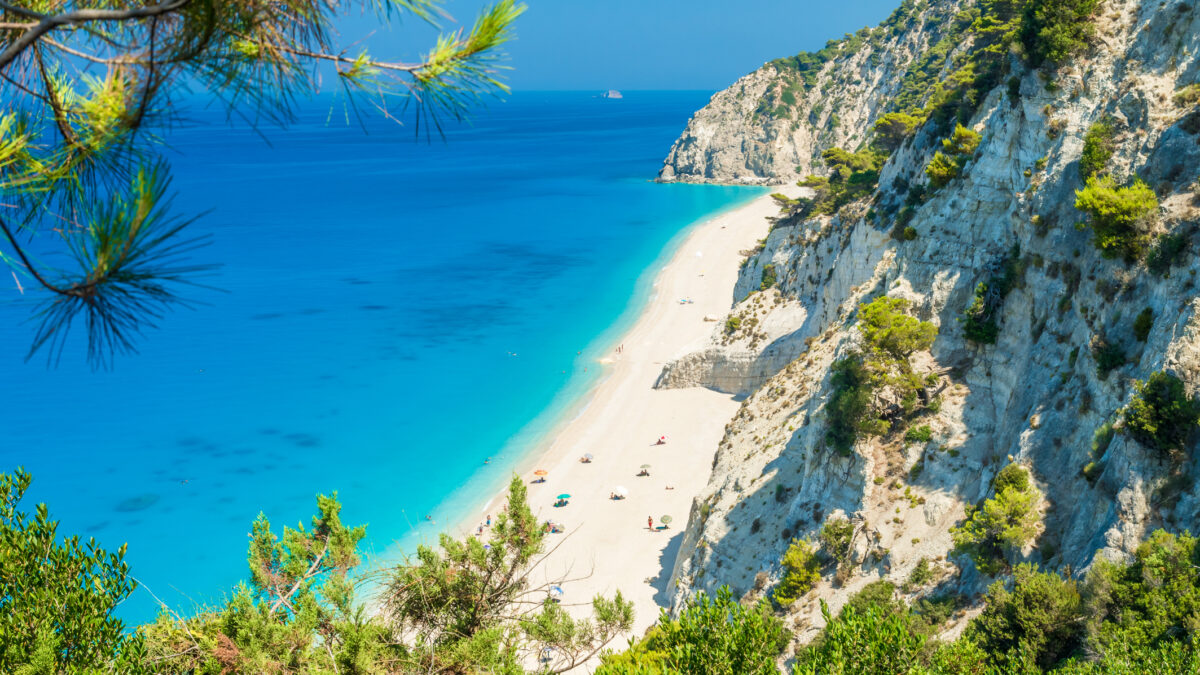Lefkada is a notably popular destination for tourists in Greece, thanks to its exotic beauty and easy access: it is connected by a floating bridge to mainland Greece and is accessible by car. Lefkada boasts a true wealth of natural beauty, striking scenery and picturesque villages, cultural heritage and cuisine.
According to Greek mythology, the island was named after ‘cape Lefkata’, due to the white colour of the local cliffs. Today, the cape, the island’s southern-most extremity, is also known as ‘Kavos tis Kyras’. The Lefkatas Lighthouse stands atop it, 15 metres tall, forming a truly impressive scene set against the island’s verdant foliage and the striking blue of the Ionian Sea. According to the myth, the poet Sappho ended her life by falling from this cliff to escape from her love of Phaon. Lefkada is a large island, truly blessed with sights to see and a plethora of experiences. Crossing the bridge, visitors will see the Agia Mavra fortress, the Gyra lagoon, and of course the island’s main settlement with its Venetian architecture and the distinctive multi-coloured corrugated iron roofing of the houses erected after the earthquake that devastated the island in the past. Villages and settlements worth visiting on the island include Nydri, where visitors can take the boat to the Princely Islands, Vasiliki, Agios Nikitas, Kavallos and the nearby Melissa gorge, Exantheia with its captivating views and world-famous sunsets, and Eglouvi, renowned for its lentils. The Phaneromeni Monastery is also worth a visit. Most of the island’s famous and award-winning beaches can be found on its western coast, including Egkremnoi, Porto Katsiki, Kathisma, Kalamitsi, Agios Nikitas, Mylos and Nikiana. In addition, the neighbouring Meganisi is a worthwhile destination for visitors with time to spare.
Cuisine
The culinary culture of Lefkada has been decisively influenced by the Venetians. Among the island’s most famous local products are its salami and the lentils from Eglouvi. The latter are grown in the village of Eglouvi and are popular thanks to their unique flavour, nutritional value and short cooking time. Lefkada salami, one of Greece’s first branded products, is known for its mild garlicky after-taste and rich flavour, and is an ideal accompaniment for ouzo, wine or tsipouro. The island also produces exceptional olive oil thanks to its storied olive groves, wine (oenophiles should not miss the opportunity to visit the various established wineries to sample the local Vardea and Vertzami varieties) and thyme honey.
Pies are a local favourite, and if you find yourself invited to a family meal on Lefkada, chances are you’ll be served ‘ladopita’ for dessert, a sweet that’s reminiscent of halva. The taverns and restaurants of Lefkada regularly serve rooster in red sauce over pasta, large fish caught in the open sea or lagoon fish prepared in various ways, crabs stuffed with rice, and juicy local frygadeli (spit-roasted liver). In addition, popular local sweets include pasteli and nougat.
How to get there
Together with Evia, Lefkada is one of Greece’s two islands that can be accessed by road. Visitors can also take flights from Eleftherios Venizelos airport to Aktion airport, just 20 kilometres from the island, and complete the journey by road.










